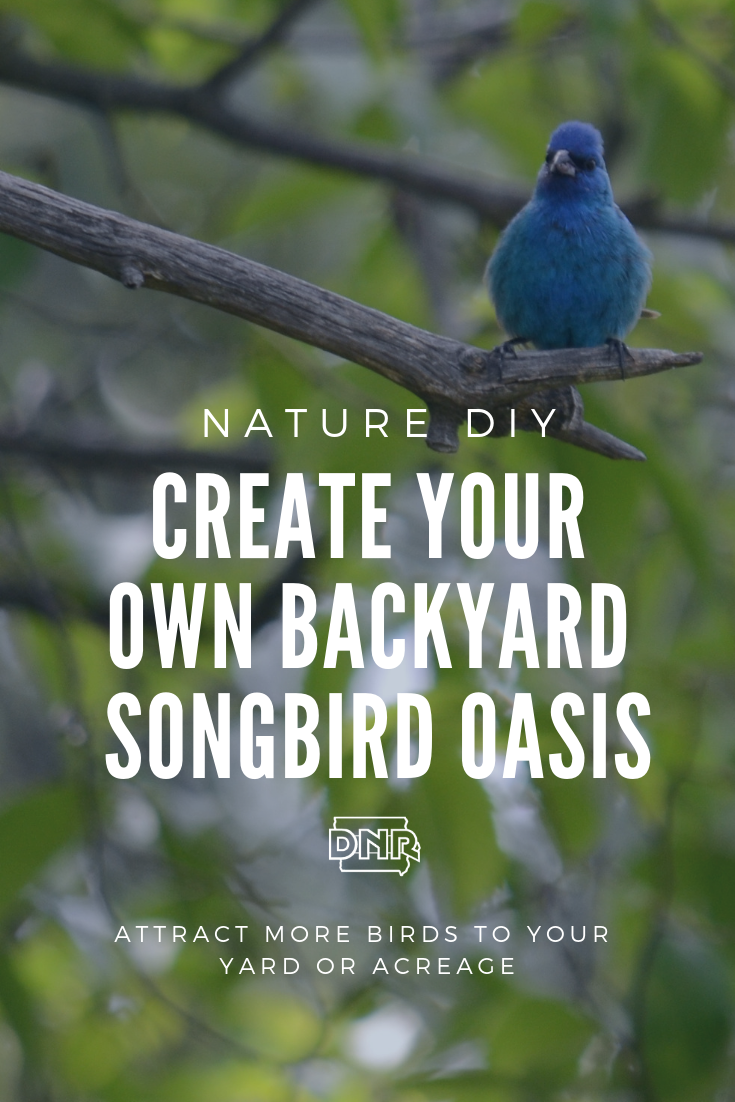We all know it’s been a long, hard winter - but we can make any season a bit more manageable for Iowa’s songbirds with a few simple projects in the yard or on your acreage.
 Don’t be afraid to get messy.
Don’t be afraid to get messy.
When we’re talking about wooded areas, don’t feel like the forest floor needs to stay clean. Native shrubs and downed woody debris provides excellent forest cover for songbirds and other native wildlife. Offering coralberry, gooseberry, bottlebrush grass, silky wild rye grass or white snakeroot creates excellent conditions to see birds. In a yard, small brush piles can create excellent cover for your songbirds, especially when placed near places where they feed. This allows them a place to escape for cover and to get out of the elements.
Keep it native.
Iowa’s wildlife are suited best to native shrubs and the nutrients they provide, so choosing native plants over non-native ornamental plants can provide a boon to birds and wildlife in your neck of the woods. Look for trees, shrubs and plants native to the region, as well as species that will handle your site and soil conditions. Watch out for invasive plants like honeysuckle, autumn olive, japanese barberry and others that provide shelter, but not much food. In addition, they shade out more beneficial native plant species.
Mix it up.
Build a bird buffet with a variety of shrubs to keep food available throughout the growing season and into fall and winter. The State Forest Nursery offers many of these native trees and shrubs, and your DNR District Forester can recommend locally native trees and shrubs well-suited to your site.
Give some distance.
Add your plantings away from any reflective windows to help prevent bird-window crashes. Focus instead on edge plantings with a variety of native food-bearing shrubs.
Take me to the river.
If you happen to have wooded land around a river or stream - called a riparian area - congratulations on having a songbird paradise! With water available and tall trees for nesting and cover, you’ll see birds all around. Focus on native, fruit-bearing trees to keep them coming back to the resort - think hackberry, black cherry, red mulberry, elderberry, hawthorn, and chokecherry.
Live on the edge.
There’s usually not a neat, tidy border between a forested area and other habitat - that shrubby, weedy edge between the woods and the prairie or a field can also be important to wildlife. This young forest area provides excellent cover, and the wide array of trees and shrubs pioneering the site offers excellent food for birds (such as smooth sumac, eastern red cedar, black cherry, wild plum, blackberry, native black raspberry, wild grape, rough-leafed or gray dogwood).
No woods at your house? No worries. You can achieve the same effect with a technique called “edge feathering.” With a forest, you’d create a ramp between the tall forest edge and the short vegetation crop field or prairie with descending heights of native trees and shrubs. Around a property perimeter, it’s much like a windbreak, except in reverse. The tallest trees are on the property boundary, with the shorter rows of trees and shrubs facing towards the center of your property.
For more ideas, check out the State Forest Nursery catalog and our In Your Own Backyard board on Pinterest.